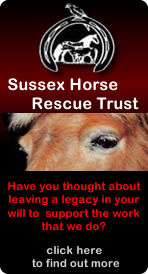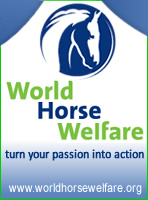
Horseytalk.net Special Interview
Sue Dyson
AHT EXPERT URGES RIDERS NOT TO SADDLE THEIR HORSE WITH PROBLEMS
 Dr Sue Dyson, Head of Clinical Orthopaedics in the AHT Centre for Equine Studies, was invited to appear as guest speaker at this year's National Equine Forum (NEF).
Dr Sue Dyson, Head of Clinical Orthopaedics in the AHT Centre for Equine Studies, was invited to appear as guest speaker at this year's National Equine Forum (NEF).
Sue has dedicated 35 years to treating hundreds of patients each year in the clinic, as well as advancing the knowledge and techniques in equine medicine through her pioneering research.
The National Equine Forum is a prestigious annual event, attended by leaders of their field within the equine industry; including vets, trainers, physiotherapists, farriers and welfare organisations. It is a wonderful opportunity for equine experts and enthusiasts to share their knowledge and research, to improve the care and welfare of horses worldwide.
Sue has previously highlighted crucial and sometimes contentious topics such as obesity in such forums, to get the industry talking and to take action for the good of the horse. At NEF Sue drew attention to saddle fitting, presenting her findings from studies investigating the relationship between the horse, saddle and rider.
Sue emphasized the importance of correct saddle fitting for the welfare of the horse, but also the implications on the rider's position, balance and the pair's potential to perform well together.
Taking a holistic approach, this particular research should encourage saddle fitters to provide saddles that will not cause pain or compromise the horse's musculoskeletal development and will also assist the rider to maintain a balanced position. Riders and trainers must also recognise the importance of good posture and synchronous movement to minimise inappropriate loading of the horse's back.
The Study
 We recently completed a pilot study investigating some basic aspects of rider position and saddle fit for the rider. Lateral photographs of 34 randomly selected horses and riders which had been assessed at the AHT were evaluated by 12 assessors. These included equine veterinary surgeons (n=4), an equine veterinary nurse (n=1), equine technicians (n=5) and office staff (previous horse owners, n=2).
We recently completed a pilot study investigating some basic aspects of rider position and saddle fit for the rider. Lateral photographs of 34 randomly selected horses and riders which had been assessed at the AHT were evaluated by 12 assessors. These included equine veterinary surgeons (n=4), an equine veterinary nurse (n=1), equine technicians (n=5) and office staff (previous horse owners, n=2).
The riders included pleasure riders, those that competed at amateur level and professional riders. The assessors were asked to determine if the rider sat correctly, with the shoulder, 'hip' and heel in alignment; whether the rider was too large for the seat of the saddle or for the saddle in general; whether the rider sat too far towards the back of the saddle; whether the fit of the saddle to the rider was likely to adversely affect their position; and whether the rider was too big for the horse.
There was generally good agreement among the assessors. The consensus of the results was rather disturbing. Only 4/34 riders (12%) had alignment of their shoulder, 'hip' and heel. Fourteen of 34 riders (41%) were judged to be sitting too far towards the back of the saddle.
Twenty of 34 riders (59%) were considered to be too big for their saddle.
These findings have implications for the balance of the rider with the horse and the rider's weight distribution on the horse relative to its centre of gravity. These preliminary results will form the basis of a much larger scale study of saddle fit to horse and rider and the influence on rider position.
Common Problems:
- Saddles are often fitted to the horse, but not to both the horse and rider
- If saddles are not fitted to the rider this can make them unbalanced and therefore place abnormal forces on the horse's back
- Lameness and poor performance can be the result of an ill-fitting saddle,
- because the saddle may restrict the movement of the horse
- Saddles are not often not checked frequently enough for correct fit in horses that may change shape (e.g., young horses as they develop musculature through their training, or during seasonal weight changes)
- Cost of tack can discourage owners from buying the 'correct fit', and instead they will purchase the 'best fit' from what is available
Sue's Call to Action:
- Better training and education available to saddlers, giving them access to the latest research and techniques to provide the best products for improved welfare and performance of the horse
- Saddlers encouraged to consider the fit of tack to both the horse and the rider
- Owners reminded to have their tack checked when they change their horse's routine, workload or type of training, and to consider the time of year and horse's age or level of training to plan necessary saddle fit checks
- Basic rider position (shoulder-hip-heel alignment) emphasised to riders, trainers and saddle fitters from grass-roots level through to professionals, to better recognise poor saddle fit and promote good rider-horse balance
- Better owner education of how to check if your saddle fit – Sue has already developed this leaflet to help, here
- Cost can be a concern, but money invested in a correct-fitting saddle could save your horse's back and a huge vet's bill in the future due to the injuries an ill-fitting saddle could cause. Does your horse really need another rug, or is that money better spent on your saddle?
To find out more about how our research helps horses today, tomorrow and forever, visit: http://www.aht.org.uk/cms-display/equiness.html


